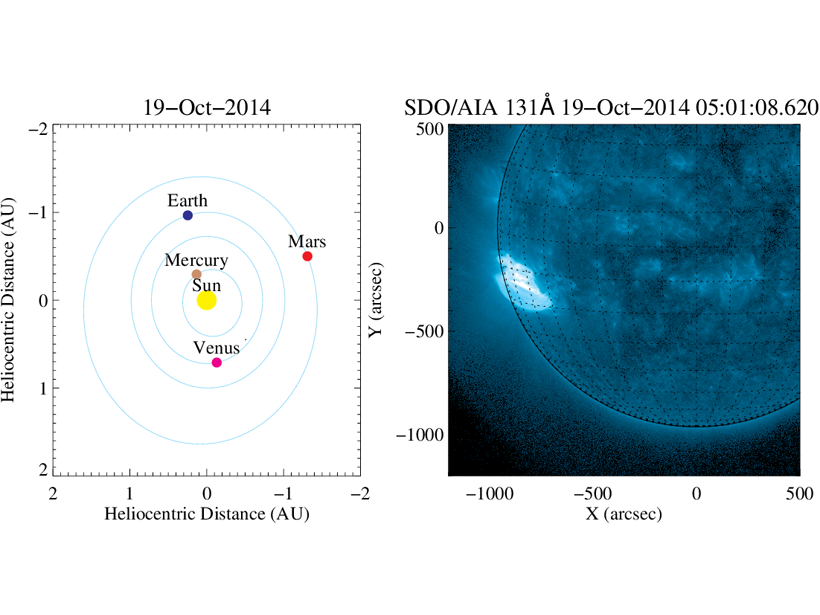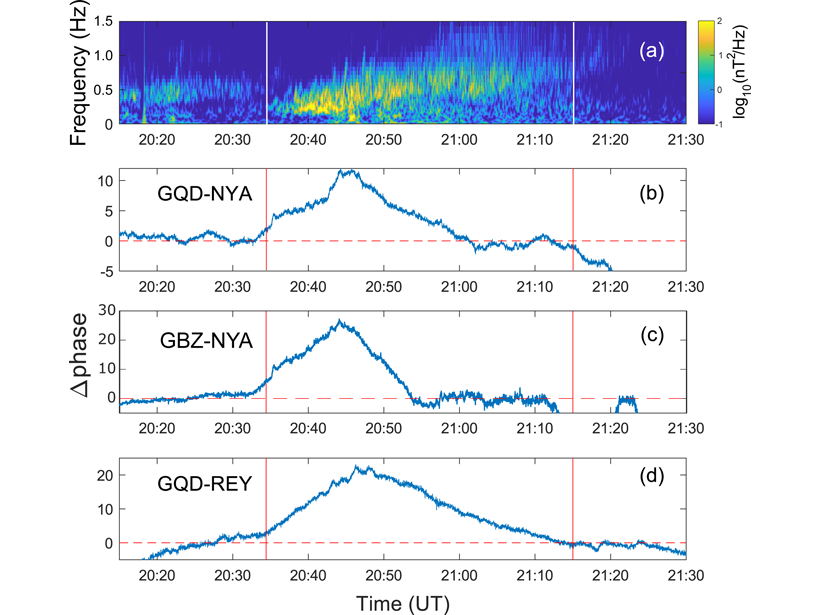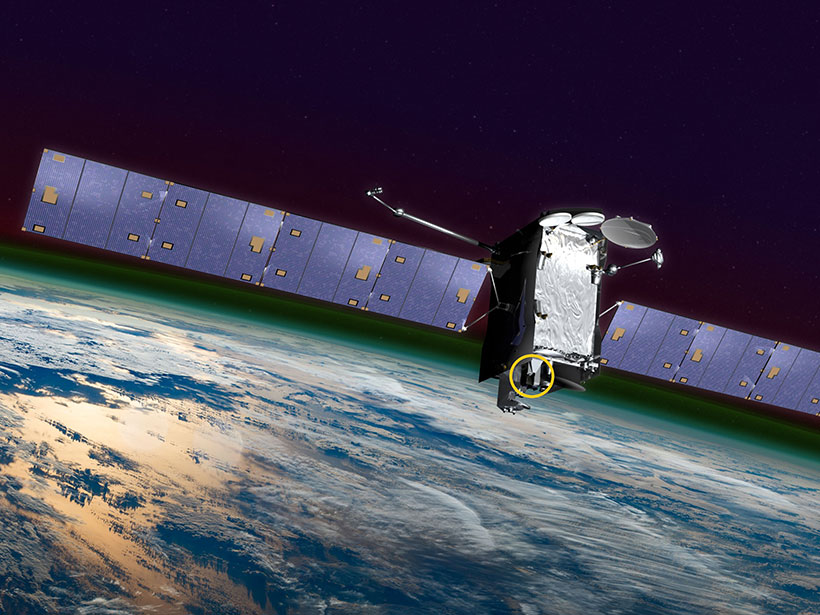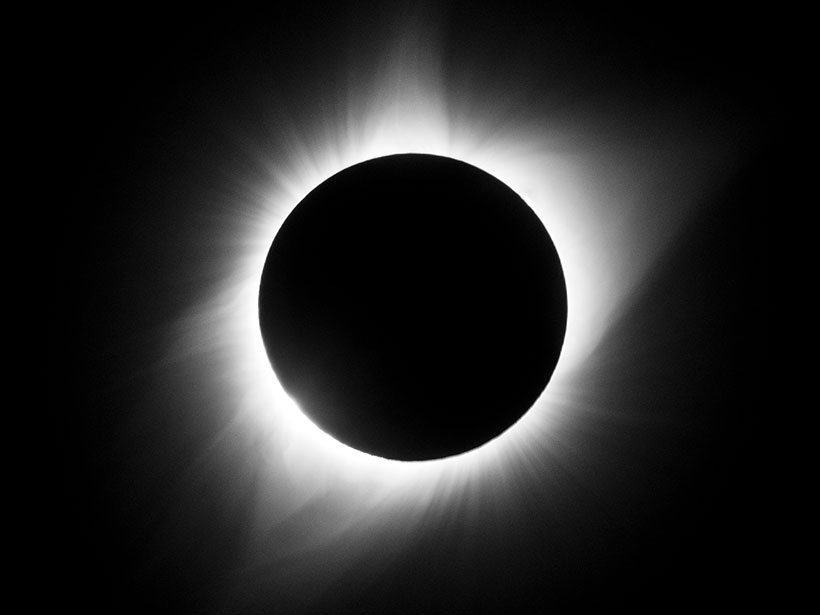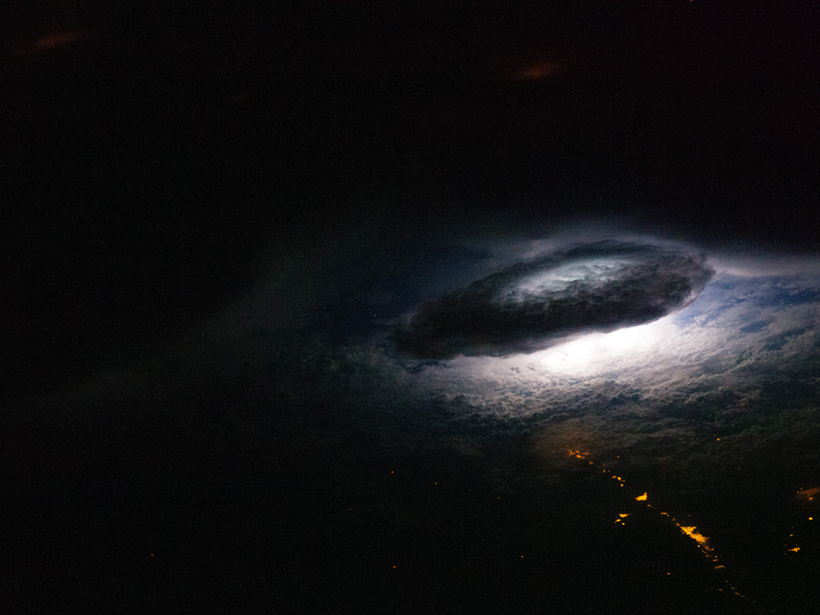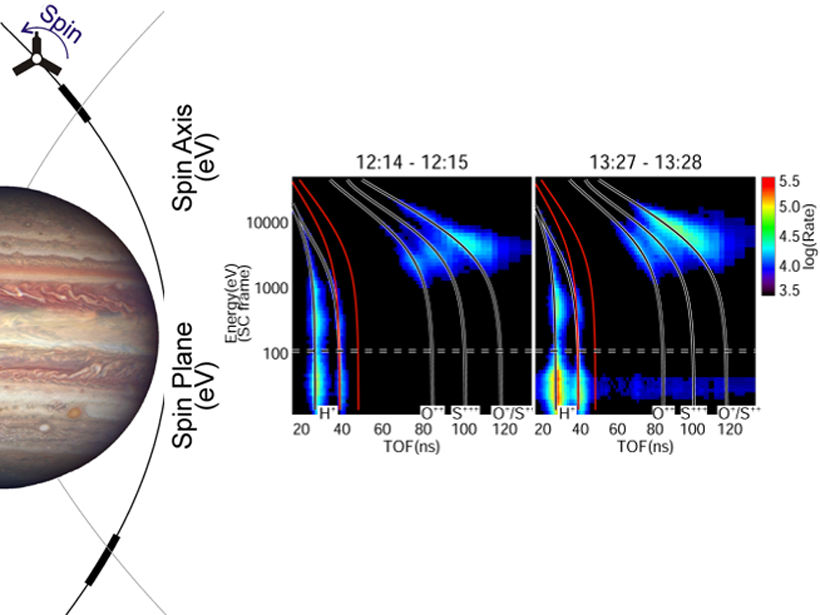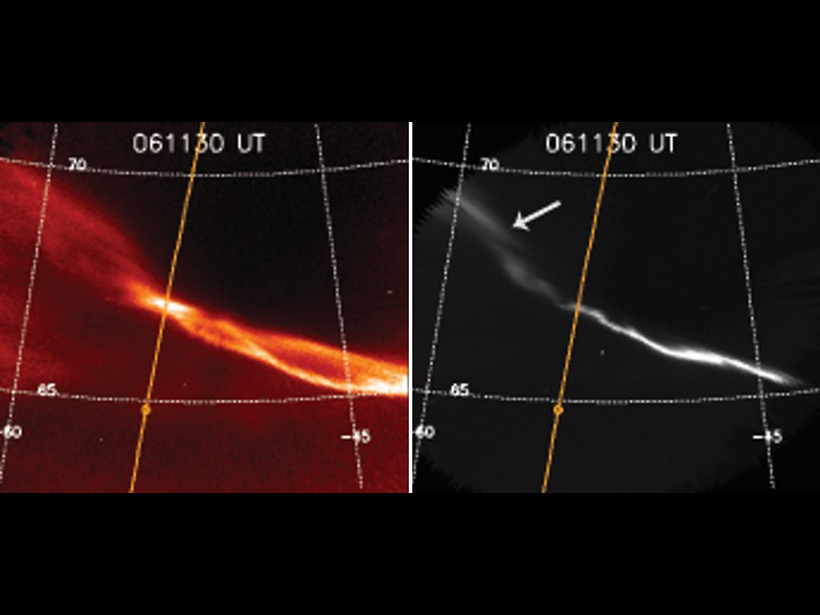Lyman-alpha emissions convey a major part of the solar-flare photon energy reaching Earth and play a significant role in flare-driven enhancements of ionospheric conductivity.
ionospheres
All Hands on Deck to Catch Ion Cyclotron Waves
An international armada of orbiting satellites and ground VLF network join forces to form a “magnetosphere-ionosphere observatory” to size up electromagnetic ion cyclotron waves in the magnetosphere.
A GOLDen Way to Study Space Weather
A NASA mission is observing airglow in the upper atmosphere and uncovering what it tells us about Earth’s space weather system.
Altitude Matters for Solar Eclipse Observations
The path of a solar eclipse through Earth’s ionosphere, which can be quite different than it is at ground level, appears to explain patterns of ionized particle depletions.
Studying Earth’s Double Electrical Heartbeat
Charged by thunderstorms and other weather phenomena, the global electrical circuit connects the entire planet.
First Inside Look at Hot and Cold Ions in Jupiter’s Ionosphere
The first in-situ ion observations from NASA’s Juno spacecraft reveal the surprising, simultaneous presence of cold protons and hot oxygen and sulfur ions in the high-latitude ionosphere of Jupiter.
Charging Thunderclouds Affect Ionospheric Conductivity
As thunderstorm updrafts strengthen, electrification of clouds can heat the lower ionosphere, explaining prolonged disturbances to radio waves in the rarefied atmospheric layer.
Holistic Views of the Nighttime Ionosphere
The nightside ionosphere, at latitudes away from the auroral zone, should have very little charged particle density, but it doesn’t. A new comprehensive study of satellite data explains why.
Red and Green Aurora Stop and Go for Different Reasons
Green-line arc is found to be embedded within large-scale upward field aligned currents while red-line-only arc is found to be associated with low-energy precipitation bursts.
No Underground Magma Ocean on Jupiter’s Fiery Moon?
A new study suggests alternative explanations for Io’s unusual magnetic field.

